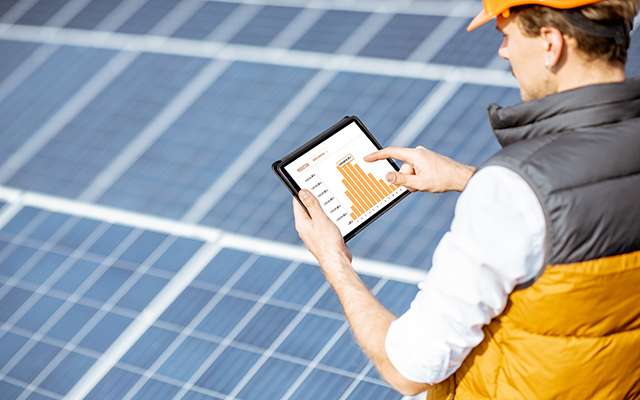Solar panels may seem simple on the outside, but the electrical components in your panels, wiring, and your inverter are extremely complicated and fairly delicate. When you have a dip in energy production, you may wonder if that expensive equipment is malfunctioning, or if it’s just due to a natural variation in sunlight. To help you get to the root of the issue, we’ve put together five steps to ensure your solar panels are working properly and as efficiently as possible.
How Common Are Solar Panel Failures?
Solar panels and inverters are very complex pieces of equipment, and there are a lot of pieces of the sunlight-capturing process that can go wrong. These issues include photovoltaic degradation, electrical issues, panel damage, and a myriad of other possibilities. The total failure rate of a solar panel is about one in 2,000, but smaller issues that can lead to reduced energy production are far more common.
Follow the steps below to ensure your panels aren’t experiencing any of these problems.
Step 1: Before you do anything else, check the weather! Solar panels, of course, rely on sunlight for energy production, so cloud coverage or rain can be a big contributing factor to reduced energy. Sunlight intensity is also lower in the winter, which will affect production. Rule out the weather as the culprit before taking any other action.
Step 2: Check your inverter for proper functionality next. You may have one large inverter for all of your panels, or micro-inverters mounted to the underside of each solar panel. Check these for damage or consider having a professional perform an inspection.
Step 3: Next, read your solar inverter. Normal production throughout the day will vary naturally with cloud coverage or shade, but a lower production overall can be a sign of solar panel failure. Monitor your production, and take note of any dips.
Step 4: Check your energy bill to see if overall prices have changed. You may notice a reduction in your energy production, but it may be due to some outside cause. If your bill is the same as it has always been, then you’re still getting average production. If your cost is higher, then it can be a good sign of a solar panel issue.
Step 5: The best way to ensure proper functionality and efficiency of each solar panel is to get them tested. Contact one of our highly-trained solar panel professionals today for state-of-the-art infrared testing on each portion of your panel. This will reveal any internal electrical problems or solar cell failures right away.

